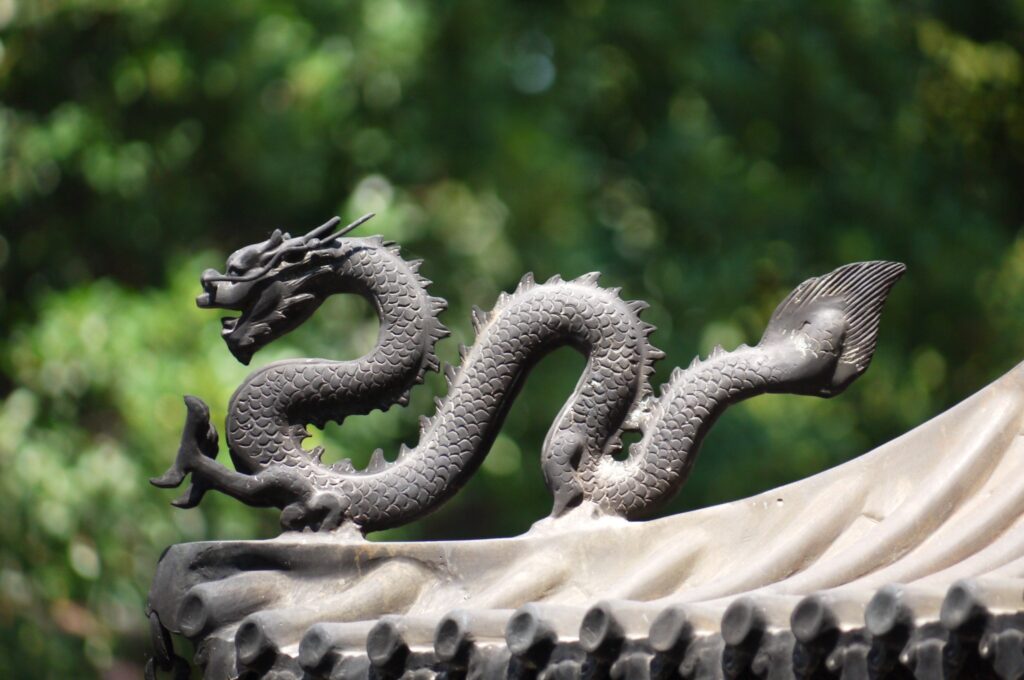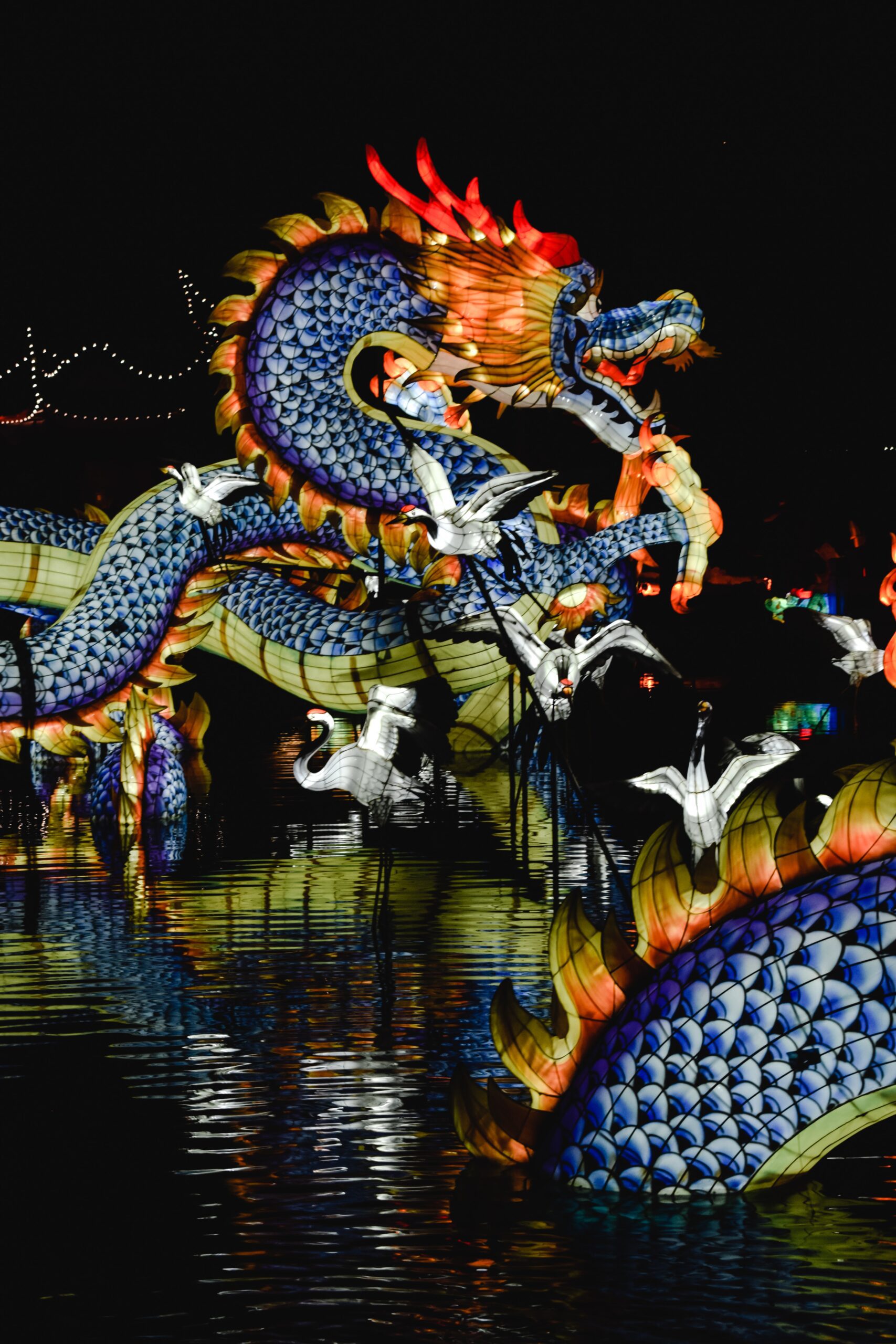Konnichiwa! Dragons are mythical creatures that have fascinated people across the world for centuries. These creatures are often associated with power, wisdom, and good fortune. In Japan, the dragon is known as “ryū” (竜) and has played an important role in Japanese culture and folklore for centuries. Dragons are often depicted as long, serpent-like creatures with colorful scales and sharp claws. They are typically associated with water, especially the ocean, and are considered to be powerful and benevolent creatures that can bring good luck and prosperity to those who honor them. In this article, we will explore the history of the word “dragon in Japanese” and its significance in Japanese culture.

Planning a trip to Japan?
The Origin of the Word “Ryū”
The word “ryū” (竜) is the Japanese term for dragon, and it has its roots in Chinese culture. The Chinese believed that dragons were powerful creatures that controlled the water and the weather. The Japanese adopted this belief and integrated it into their own culture, where dragons were seen as guardians of the water and protectors of the land.
The first written reference to the word “ryū” in Japan can be traced back to the 8th century. In the Kojiki, which is Japan’s oldest surviving chronicle, the dragon is mentioned as a creature that could transform itself into a human form. The Kojiki also describes the dragon as a creature that could summon the rain and control the winds, which highlights the dragon’s association with the water and the weather.
The Importance of Dragons in Japanese Culture
In Japanese culture, dragons are seen as symbols of power, wisdom, and good fortune. They are often depicted in art, literature, and folklore as creatures that bring prosperity and happiness to those who are worthy. The dragon is also associated with the imperial family, and it has been used as a symbol of the emperor’s power and authority.
The Japanese also believed that dragons were protectors of the land and the sea. They believed that the dragon’s power could protect them from natural disasters and evil spirits. For this reason, dragons were often depicted on Japanese swords, armor, and other weapons to give the warrior strength and protection in battle.

The Different Types of Dragons in Japanese Culture
There are several different types of dragons in Japanese culture, each with their own unique characteristics and attributes. The most common types of dragons are:
Dragon Symbolism in Japanese Culture
Dragons have been an important part of Japanese culture for centuries, and their symbolism is rich and complex. Here are a few examples of the different ways that dragons are used in Japanese culture:
The Dragon in Japanese Folklore
The dragon has played an important role in Japanese folklore for centuries. There are several popular legends and stories that feature dragons as the main characters. One of the most famous legends is the story of Yamata no Orochi, which is a story about a serpent-like dragon with eight heads and eight tails. The story goes that a brave warrior named Susano-o defeated the dragon and rescued a princess who was held captive by the beast.

Another popular legend is the story of Urashima Taro, which is a story about a fisherman who saves a turtle from some children who were tormenting it. As a reward, the turtle takes Urashima Taro to an underwater palace where he meets a beautiful princess. He spends several days in the palace but eventually decides to return to his village. When he returns, he realizes that centuries have passed, and he has become an old man. The story is often interpreted as a cautionary tale about the dangers of seeking out otherworldly pleasures.
The dragon also appears in many traditional Japanese festivals and celebrations. For example, the Kanda Festival, which is held every May in Tokyo, features a procession of portable shrines, one of which is decorated with a dragon motif. The dragon is also a common subject in Japanese calligraphy and painting, and many famous artists have created works featuring dragons.

The Legacy of Dragons in Japan Today
Today, dragons remain an important part of Japanese culture and folklore. Although many people no longer believe in the mythical creatures, they still hold a special place in the hearts of many Japanese people. The dragon is still a popular subject in art and literature, and it continues to be featured in festivals and celebrations across the country.

In recent years, the popularity of dragons in Japan has been further cemented by the success of popular media franchises such as “Dragon Ball” and “One Piece,” which feature dragons and other mythical creatures as central characters. These franchises have helped to introduce a new generation of Japanese people to the magic and wonder of dragons.
Dragons in Japanese Art and Literature
Dragons have been a popular subject in Japanese art and literature for centuries, and their depictions have varied widely over time. Here are a few examples of how dragons have been portrayed in Japanese art and literature:
Dragon Festivals in Japan
There are several festivals in Japan that celebrate dragons and their importance in Japanese mythology. Here are a few examples:
Wrapping it up
In conclusion, the dragon in Japanese culture is a powerful and revered creature that has played an important role in the country’s history and folklore for centuries. From its origins in Chinese culture to its significance in Japanese art, literature, and festivals, the dragon has captured the imagination of people across Japan and beyond. Whether it is seen as a symbol of power, wisdom, or good fortune, the dragon remains an enduring and beloved part of Japanese culture to this day. The dragon will continue to inspire and fascinate people for generations to come. Be sure to check our our other “language” blog posts such as “How to Pronounce Ramen” and “How to Say Yes in Japanese” if you are interested to learn more!
Disclaimer: If you use the link on this page to purchase travel insurance, we will receive a fee from Freely, a brand of Cover-More Insurance Services Pty Limited ABN 95 003 114 145 (AFSL 241713) (Cover- More). We do not act for Cover-More or Freely. The information provided is only on the availability of Freely products. We do not give advice & the information provided is not intended to give an opinion or recommendation regarding the product. For information on how to contact Cover-More or Freely refer to the PDS, FSG & TMD which can be found on the Freely website.



